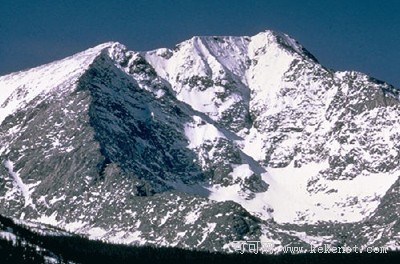上次的攀巖結束后,咱們今天就去一探究竟,這平頂脊(熨斗形巖石)是怎么形成的,這樣子的巖石山還真的很特立獨行,Daisy我很好奇哦。你呢?說不定咱們要去實驗室走一趟呢?拭目以待吧。

Taking a closer look, Lester can found out more about the surroundings they formed in.
"These were not just deposited in any kind of sedimentary situation, but they were deposited in rivers capable of transporting big particles and busting them up as it goes along."
Sheets of sand and gravel built up a thick sedimentary bed like a layered cake. But stream deposits are rarely more than a few degrees from horizontal.
"These rocks you can see the layers, and layers in the Flatiron behind me are 60 degrees."
Something caused these vast slabs to be tilted. The investigation moves ten miles northeast to Flagstaff Mountain located in the outer ranges of the Colorado Rockies.
"I'm standing here right next to a miniature of Flatiron. It's tilted like the Flatirons at about 60 degrees. It's steep. How did it get that way if it was originally a stream gravel deposit?"
The answer lies in the darker rock underneath. It is granite and looks completely different to the Flatiron rock above.
"There's no layering in this rock, unlike the Flatiron rock which does have layering. There's no pebbles in this rock, unlike the Flatiron rock which does have pebbles."
A close-up investigation of the granite reveals that it is full of minerals. This offers another clue to how the Rockies emerged.
"So I’ve picked up this granite here. And taking a look at it, I see quartz and feldspar and a little bit of mica in here, very characteristic of a rock like this that has cooled from a magma, from a liquid rock."
Among the minerals is iron. It is responsible for the dark color of the rock. The precise quantity of iron tells scientists the depth at which the rock was formed.
"So we've taken this rock into the laboratory and we do the chemistry on this rock, and we can actually determine that not only did it cool and crystallize at depth, that depth we can estimate at about 15 miles down."
小編有約:呵呵~~Daisy今天的問題是什么呢?假設咱們是實驗員,正好你知道了巖石中鐵元素的準確含量,那就等于知道了什么?好好想想在看答案!











